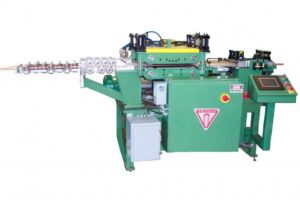The tube end forming process refers to a variety of manufacturing techniques used to shape or modify the end of a tube. These processes are typically employed to enhance the functionality of the tube, improve its connection with other components. Also, achieve specific design requirements. Here are some common tube end forming techniques:
The Tube End Forming Process Options
- Flaring: Flaring involves expanding the end of a tube to create a widened opening. This is often done to facilitate better connections with other tubes, fittings, or components. Flaring can be achieved through methods such as cold flaring, hot flaring, or hydraulic flaring.
- Beading: Beading refers to the process of forming a raised ridge or bead around the circumference of the tube end. Beading is commonly used to improve the joint strength or provide a sealing surface for hoses, pipes, or connectors.
- Swaging: Swaging involves reducing the diameter of the tube end to a specific size or shape. This process is typically performed by applying radial compressive forces to the tube, causing it to conform to the shape of a die. Swaging can be used for reducing the tube diameter, forming tapers, or creating internal or external grooves.
- Expanding: Expanding, as the name suggests, involves increasing the diameter of the tube end. This process can be achieved through methods like hydroforming, mechanical expansion, or internal mandrel expansion. Tube expanding is useful for creating a tight fit or ensuring proper sealing with other components.
- Flanging: Flanging is the process of creating a flat, raised, or angled rim around the tube end. Flanges are often used to provide attachment points or mounting surfaces for other components, such as flanged fittings or brackets.
- Notching: Notching is the removal of a section of the tube end, often to accommodate the mating part or to allow for clearance in assembly. Notches can be made using various cutting methods, including sawing, milling, or laser cutting.
- Chamfering: Chamfering involves beveling or sloping the edge of the tube end. This is commonly done to remove sharp edges, facilitate insertion into other components, or improve aesthetics.
End Forming Machines
These are just a few examples of tube end forming processes. The specific technique used will depend on the desired outcome, material properties, tube dimensions, and the manufacturing capabilities available. Finally, contact Tridan International today to order your end forming machine.


